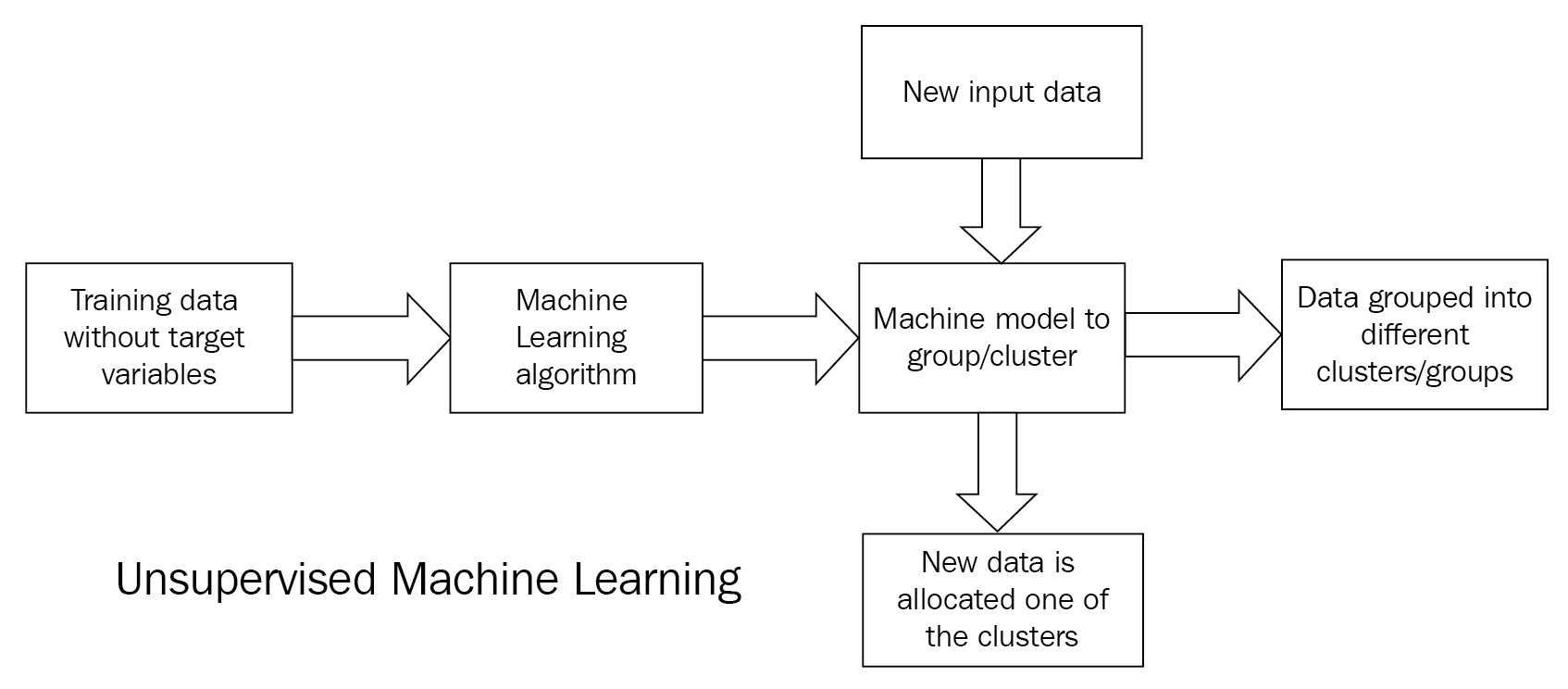In unsupervised learning (or self organization), the output layer is trained to organize the input data into another set of data without the need of a target variable. The input data is analyzed and patterns are found in it to derive the output, as shown in the following figure. Since there is no teacher (or target variable), this type of learning is called unsupervised learning.

The different techniques available for unsupervised learning are as follows:
- Clustering (K-means, hierarchical)
- Association techniques
- Dimensionality reduction
- Self Organizing Map (SOM)/ Kohonen networks
To summarize, the two main types of ...

